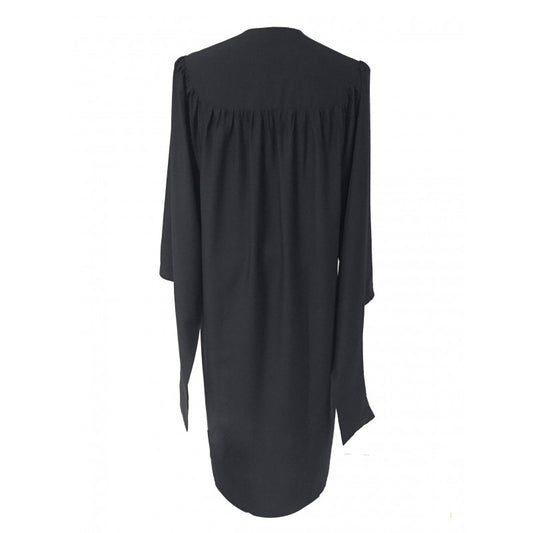Earning a master’s degree is a significant academic achievement, marking the culmination of advanced study and research in a chosen field. The commencement ceremony for master’s graduates is a time-honored tradition, where the academic regalia of caps and gowns plays a central role. In this article, we will explore the history and significance of master’s degree caps and gowns, the distinguishing features of this attire, and tips for selecting the perfect regalia for your graduation day.
The History and Symbolism of Academic Regalia
The tradition of wearing academic regalia dates back to the Middle Ages when universities first formed in Europe. Scholars wore robes and hoods to keep warm in unheated buildings, and these garments eventually became symbols of academic achievement. The modern master’s cap and gown have evolved from these early roots, maintaining their symbolic significance.
The Components of Master’s Degree Regalia
Master’s degree regalia consists of several key components, each with its own significance and purpose:
- The Gown: The master’s gown is distinct from bachelor’s and doctoral gowns in several ways. It features long, oblong sleeves that are open at the wrist. The sleeves are often slit near the elbow to allow for ease of movement, symbolizing the transition from student to master. The gown is typically black, but some institutions may use colors representing their school.
- The Hood: The academic hood is an essential part of master’s regalia. It is worn draped around the neck and over the shoulders, with the colors and lining representing the graduate’s field of study and the university from which they are graduating. The length of the hood also signifies the level of the degree, with master’s hoods being longer than bachelor’s but shorter than doctoral hoods.
- The Cap: The mortarboard cap is a square, flat hat with a tassel attached to the center. Master’s graduates traditionally wear the tassel on the left side of the cap throughout the ceremony, signifying their advanced status. Some institutions may use different styles of caps, but the mortarboard remains the most common.
- Tassels and Cords: While tassels are standard on all caps, some graduates may also wear honor cords or stoles to signify academic honors, membership in honor societies, or other achievements.
Selecting the Perfect Master’s Cap and Gown
Choosing the right master’s cap and gown involves considering several factors to ensure you look and feel your best on graduation day. Here are some tips to guide your selection:
- Check University Guidelines: Each university may have specific requirements for academic regalia, including the color, style, and additional accessories. Make sure to adhere to these guidelines when purchasing or renting your cap and gown.
- Quality and Comfort: Graduation ceremonies can be long, so comfort is key. Look for gowns made from lightweight, breathable fabrics that allow for ease of movement. High-quality gowns will also have better stitching and materials, ensuring they look great in photos and last as a keepsake.
- Proper Fit: Ensure your gown fits well. Academic gowns are typically sized by height and weight, so check the sizing chart provided by the supplier. The gown should fall comfortably over your clothes and not be too tight or too loose.
- Customization Options: Some graduates may choose to personalize their regalia with embroidered names, dates, or special symbols. Custom hoods with specific lining colors to represent dual degrees or unique accomplishments are also available.
- Eco-Friendly Choices: Many suppliers now offer eco-friendly graduation gowns made from recycled materials. These gowns are not only sustainable but also high-quality and comfortable.
How to Wear Master’s Degree Regalia
Wearing your master’s cap and gown correctly is important to maintain a polished and respectful appearance during the ceremony. Here are some guidelines:
- Wearing the Gown: The gown should be worn over your regular clothes, typically business or formal attire. The sleeves should hang naturally, and the gown should fall to mid-calf or ankle length.
- Draping the Hood: Place the hood over your head, draping it around your neck and shoulders. The velvet edge should be facing out, and the lining colors should be visible. Make sure the hood sits comfortably and does not twist.
- Donning the Cap: The mortarboard cap should sit flat on your head, with the square top parallel to the ground. The tassel should be placed on the left side of the cap throughout the ceremony.
- Securing Your Attire: Use bobby pins or hair clips to secure the cap in place, especially if you have long hair. Adjust the gown and hood as needed to ensure they look neat and even.
Conclusion
Master’s degree caps and gowns are more than just ceremonial attire; they are symbols of hard work, dedication, and academic achievement. Understanding the history, components, and proper wearing of these garments adds depth to the graduation experience. By choosing the right regalia and wearing it with pride, graduates can honor their journey and celebrate this significant milestone in their academic careers.
Stay in touch to get more updates & news on Gossips!




